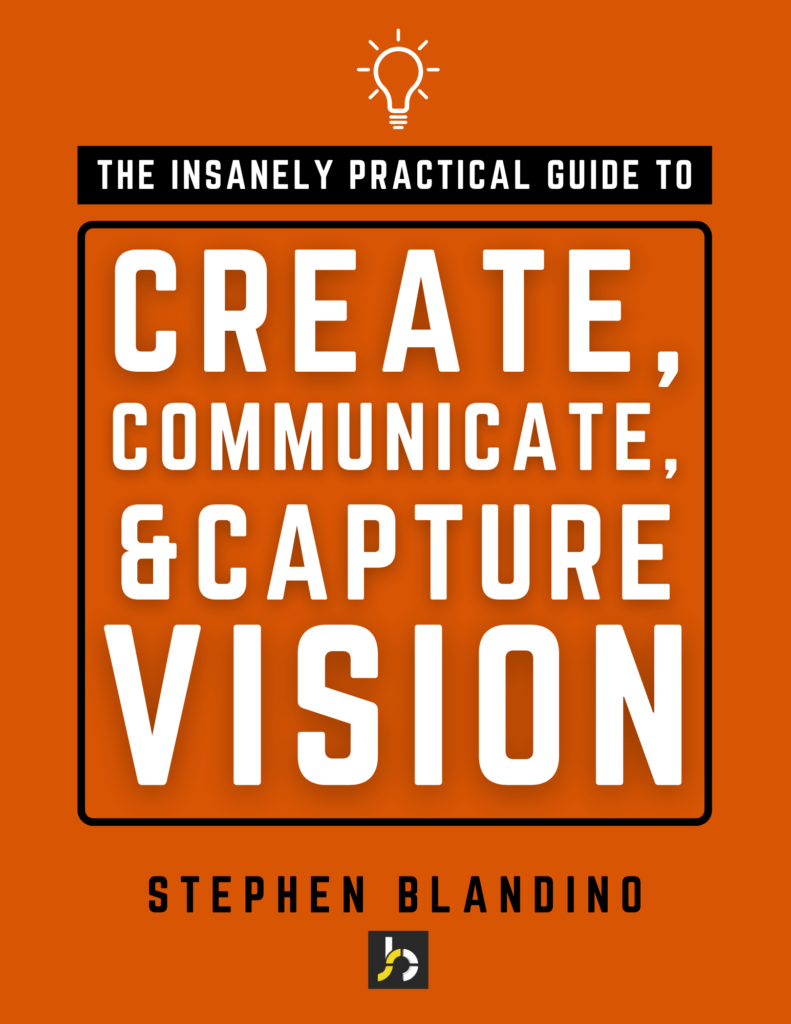Vision casting is an essential part of leadership, but sometimes we fail to cast vision in a way that compels people to action. Not only is that frustrating, but it usually creates unnecessary resistance and delays to the vision.
If we want to create buy-in, we need to address the mistakes that often undermine our vision casting efforts. Here are three of the most common mistakes.
1. We Misestimate the Power of Clarity in Vision
Vision without clarity has no power. It’s as simple and painful as that. The number one reason leaders don’t cast clear and compelling vision is because it’s not clear in their own head. Simply put, if you asked the leader what their vision is ten different times, you would get ten different variations of the vision.
Winston Churchill once said, “Before you can inspire with emotion, you must be swamped with it yourself. Before you can move their tears, your own must flow. To convince them, you must yourself believe.” None of this is possible without clarity.
To help me gain clarity, I always write the vision. Let me be more specific. Before I cast vision, I always manuscript the vision. In other words, I write word-for-word exactly what I plan to say. I don’t read the vision word-for-word (that would feel rote and mechanical), but I do write it word for word so that I am crystal clear about what I want to say and how I want to say it. The more clear I am, the more confidence I’ll have, and the more confidence I have, the more compelling the vision will be. Clarity creates confidence which compels people to buy-in to the vision.
2. We Overestimate How Quickly People Get the Vision
It’s easy to forget how long it took to convince ourselves of the vision in our head. In most cases, we went through several iterations of the vision, often plagued with questions, doubts, and frustrations as we prayed, pondered, and planned.
Once we’re finally clear about the vision, we assume people will get it the moment we share it. Sometimes that’s true, but most times buy-in to the vision happens over time.
When we launched a major vision campaign at 7 City Church, I cast the vision to staff members, board members, donors, volunteers, and then the entire congregation. These were all separate vision casting meetings, and many of these individuals were involved in multiple meetings.
The more I cast the vision, the more the vision moved from the people’s head to their hearts. It took several weeks for the vision casting process to happen, but with each meeting, the vision took root in more hearts and at deeper levels. In the end, we moved forward with great results.
Don’t overestimate how quickly people will get the vision. It takes vision gatherings, small group meetings, and one-on-one meetings to help the vision take root. But the process is worth it.

Every leader has to create and cast compelling vision. In “The Insanely Practical Guide to Create, Communicate, & Capture Vision,” I take the guesswork out of vision to help you see, share, seize, and safeguard your vision. Get this downloadable 36-page guide today HERE.
3. We Underestimate How Long it will Take to Reach the Vision
This is the most frustrating part of the vision process. Leaders are usually action-oriented and impatient. That’s why we must remember an important truth about vision: the bigger the vision, the longer the runway.
Big visions don’t take flight overnight. Visions the size of a 777 jumbo jet take much longer to get airborne than a vision the size of a small Cessna plane. Two keys are essential to address this common mistake.
First, create a faith-stretching timeline without creating the false expectations of a completely unrealistic timeline. This will require some research and discussion with people who have expertise in the area of your vision.
Second, an inspiring vision needs to be accompanied by a solid plan. Author Dan Reiland wisely observed, “The plan must never overshadow the vision, and the vision must respect the plan.” It’s not either/or but both/and.
These three mistakes don’t have to plague your vision. By understanding them ahead of time, you can take proactive steps to mitigate them before they undermine your vision.






